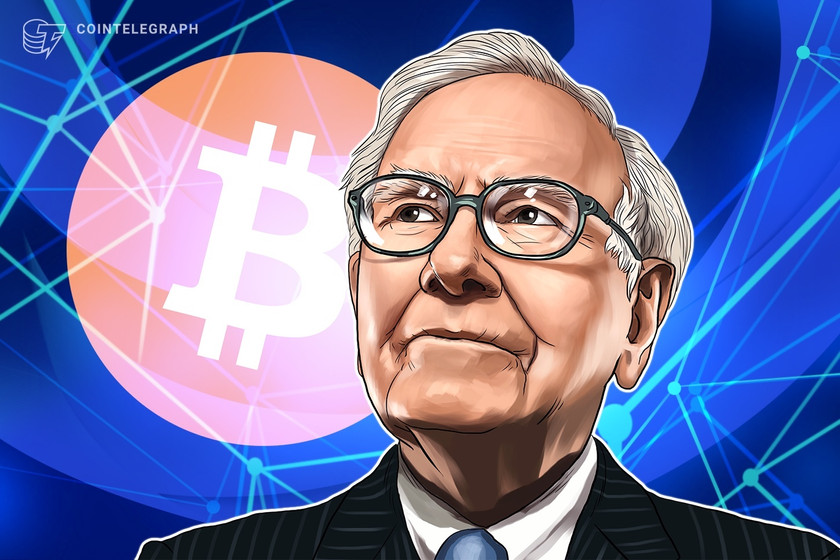Warren Buffett was wrong about a ‘rat poison’ Bitcoin portfolio, data shows


Warren Buffett is not a big fan of Bitcoin, and this position has cost his investment portfolio at least a 320,000% potential gain.
Legendary investor Warren Buffett sees no value in Bitcoin (BTC), infamously calling it “rat poison squared.” But data shows that adding Bitcoin to a so-called “rat poison portfolio,” an equally weighted portfolio of Berkshire Hathaway, Microsoft, JPMorgan and BlackRock stocks, would have produced much better returns for The Oracle of Omaha.
“Rat poison portfolio” with Bitcoin does better
Since 2014, allocating only 2.5% Bitcoin yearly to the rat poison portfolio increases returns by nearly 20% with reduced risks, according to independent market analyst Alpha Zeta. For now, the portfolio’s returns stand around 16%.


Despite Bitcoin’s notorious price volatility, Alpha Zeta noted that BTC’s correlation with the stocks of Berkshire Hathaway, Microsoft, JP Morgan and BlackRock is very low.


For instance, during the 2021–2023 bear market, allocating Bitcoin to the rat poison portfolio could have negated losses by around 10%.


In other words, BTC typically negates losses imposed by downside movements in the said stocks. Therefore, allocating a small portion of Bitcoin to the rat poison portfolio has proven to be a reasonable hedging strategy to offset potential negative returns.
Bitcoin has outperformed Berkshire Hathaway by 320,000%
Bitcoin proponents have projected it as an alternative to traditional safe-haven assets, such as gold, given the scarcity that comes with its fixed supply of 21 million BTC and increasing deflation over time.
This has attracted many people to buy Bitcoin as a way of offsetting fiat debasement and excessive money printing by central banks around the world. For instance, the number of non-zero Bitcoin addresses has grown from around 2,500 in 2009 to over 45 million in 2023, per Glassnode.


Nonetheless, Buffett has recently said that Bitcoin is a gambling token, noting that “it doesn’t have any intrinsic value […], but that doesn’t stop people from wanting to play the roulette wheel.”
However, the veteran investor continues to have exposure in the broader crypto market through his popular investments, such as Nubank, which offers crypto-related services in Latin America.
Related: Financial analyst agrees Bitcoin could be ‘rat poison,’ but not in the way you think
As of April 2023, Bitcoin is down nearly 60% from its record high of $69,000 in November 2021 but is up 100% so far this year.
Since its launch in January 2009, Bitcoin has outperformed Berkshire Hathaway’s portfolio by over 320,000%.
This article does not contain investment advice or recommendations. Every investment and trading move involves risk, and readers should conduct their own research when making a decision.



















